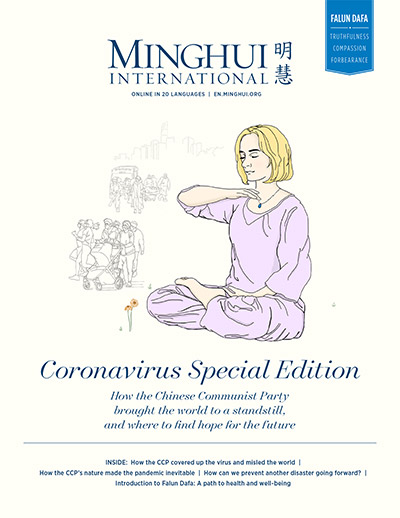(Clearwisdom.net) According to a Reuters report on February 4, 2005, scientists have discovered tiny organisms living in the very deepest part of the ocean. Many of these single-cell organisms were previously unknown.
The report said that scientists found an organism called foraminifera, a type of plankton that is usually plentiful near the ocean surface, at the bottom of the Challenger Deep in the Pacific Ocean Islands approximately 11 kilometers (~ 7 miles) underwater.
"On the species level, all the species we found from the Challenger Deep are quite new,"
said Hiroshi Kitazato, a researcher of the Institute for Research on Earth Evolution, a Japanese Agency for Marine-Earth Science and Technology. "The outer shapes are similar to other known foraminifera, but details of their structure differ," explained Kitazato. The discovery was reported in the journal "Science."
Kitazato indicated that he was surprised by the abundance of foraminifera in the deep water because the pressure there is 1100 times greater than normal atmospheric pressure at the surface.
Scientists noted that most foraminifera have hard shells but the new group does not. Similar groups, although different, have been found nearby in slightly shallower water.
In the July 29, 2002 issue of "Time" magazine, there was an article "How Life Began". It stated that life forms exist in unimaginable places and inhospitable environments such as superheated hot water, extremely cold or frozen areas and highly toxic areas. These findings created a stir in the scientific community.
The harshest environment might be the vents in the sea bottom that spew chemicals mixed with hot water at temperatures as high as 400 degrees Celsius (~750 F). The water is laden with toxic substances such as hydrogen sulfide, cadmium, arsenic and lead. Tiny single-cell organisms not only exist in such extreme hostile conditions, but in fact they are thriving.
On the other extreme is the cold, frozen southern end of earth, Antarctica. Geologists drilled 3 km (~1.8 miles) deep into the ice cap of Lake Vostok (which is about the size of Lake Ontario in North America). The temperature is extremely cold and it lacks sun and nutrients, but simple organisms have established colonies here. Scientists were amazed to find the tiny life forms.
In the past few years, more and more of these types of findings have been recognized and reported. According to modern textbooks, these life forms are not possible because organisms cannot survive in such a hot, cold, profound depth on earth, or in highly salt-concentrated water and highly toxic places. Yet similar findings keep coming to the spotlight.
Historically, these are viewed as strange and bewildering, and very few people would be interested in the research. But as evidence is uncovered, it creates a conceptual challenge to scientists and they begin to ask the question, "How did life begin?"
Furthermore, biologists have noticed that although these microorganisms and bacterium are similar, there are such huge differences between them that it is very difficult to explain through the theory of evolution.
These discoveries provide new insight in our search for life in other planets. People used to think that life can only exist in an environment that we consider "suitable." These new findings are helping us to break through this conventional thinking. We might find life forms in the most unexpected of places.
References:
Organisms Found in Deepest Part of Ocean
http://www.livescience.com/animalworld/ap_deep_creatures_050203.html
http://mhwz.net/articles/26-shengmian.htm
Category: Perspective








